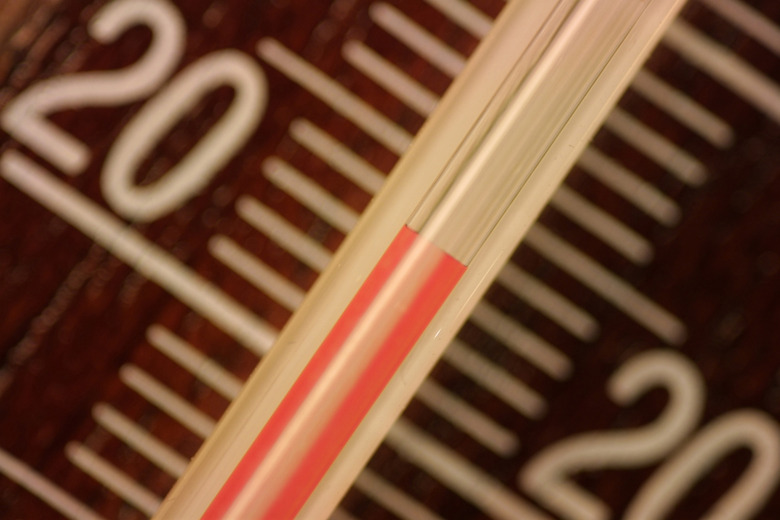How To Test A Resistance Temperature Detector
Resistance Temperature Detectors, or RTDs, work by measuring the resistivity of the metal the detector is constructed from at various temperatures. Metals have different resistivities, and metals with higher resistivities work best in RTDs. For this reason platinum is widely used in RTDs, as platinum has a high resistivity. The resistivity increases with temperature, so RTDs in freezing temperatures would show a lower resistivity than RTDs in boiling temperatures with room temperature resistivity being a mid-range number.
Step 1
Set your multimeter in resistance mode. Check the readings across the terminals of the RTD. At room temperature the reading should be around 110 ohms. The reading may vary depending on the metal in the RTD.
Step 2
Place the RTD in ice water. Give it a couple minutes to adjust and check the readings. You should get a lower number than the room temperature reading, around 100 ohms.
Step 3
Give the RTD time to adjust to room temperature after removing it from the ice water. Place the RTD in boiling water and check the readings again. The number should be higher than the room temperature reading if your RTD is functioning properly.
Things Needed
- Multimeter
- Ice water
- Boiling water
TL;DR (Too Long; Didn't Read)
Resistance at temperature divided by resistance at standard temperature equals (temperature coefficient of resistance times temperature) plus one; or R / R^o = α t + 1.
Cite This Article
MLA
Kokemuller, Jill. "How To Test A Resistance Temperature Detector" sciencing.com, https://www.sciencing.com/test-resistance-temperature-detector-12168614/. 24 April 2017.
APA
Kokemuller, Jill. (2017, April 24). How To Test A Resistance Temperature Detector. sciencing.com. Retrieved from https://www.sciencing.com/test-resistance-temperature-detector-12168614/
Chicago
Kokemuller, Jill. How To Test A Resistance Temperature Detector last modified March 24, 2022. https://www.sciencing.com/test-resistance-temperature-detector-12168614/
